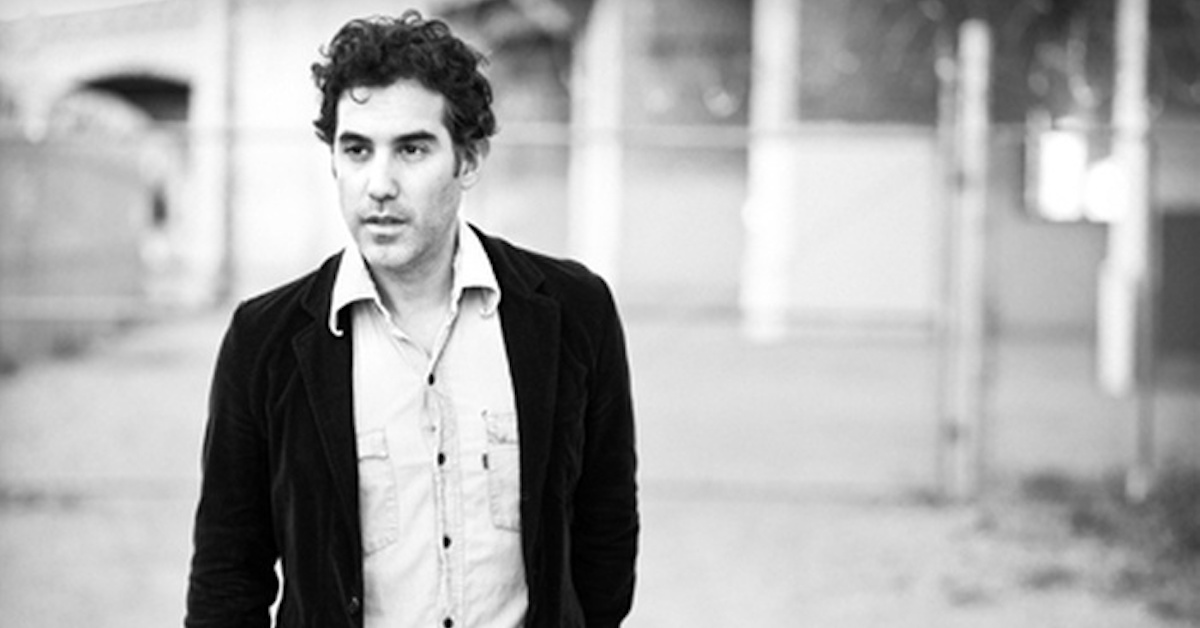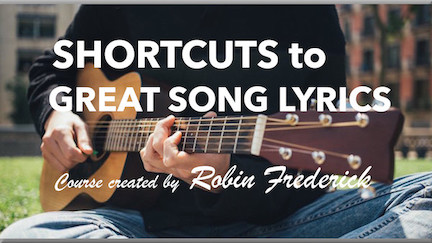I usually feature a hit song from the music charts in this section, but this time I want to take a look at an artist who has built an extremely successful career on Film & TV placements, Joshua Radin. More than 40 of Radin’s songs have appeared in top TV series, including Bones, Parenthood, Grey’s Anatomy, Beauty and the Beast, Chicago Med, 90210, and the list goes on. You won’t find his songs on the mainstream music charts, nevertheless, he has sold millions of downloads and singles.
Radin’s songs are atmospheric, mood-based, and emotionally evocative rather than attention grabbing radio hits. They tend to feature one- or two-line refrains instead of big, over-the-top choruses, as radio singles do. The production is simple but carefully thought out, with chiseled performances that lock into a groove.
Every song is filled with insight, fresh twists, and beautiful payoff lines that are perfect for film and TV uses. If you’re a singer-songwriter looking at the Film & TV market, here’s an artist who is worth studying.
Song Guide: “Beautiful Day” – Joshua Radin
TECHNIQUES TO HEAR AND TRY:
Turn a simple idea into a compelling lyric.
Add interest to a melody with unpredictable phrasing.
Create an arrangement that supports your lyric concept.
Listen to the song. Read the Lyrics.
Recorded by Joshua Radin
Songwriters: Joshua Radin & Kenneth A. Pattengale
Read the lyrics here: Beautiful Day – Joshua Radin
Watch on YouTube.
GENRE/STYLE (Singer-Songwriter)
The song’s genre is Contemporary Folk/Rock. It fits right in with songs by Passenger, Phillip Phillips, Ed Sheeran, American Authors, and Iron & Wine. “Beautiful Day” has been featured in three primetime TV series and a Subaru commercial. Radin recently released a second version of this song featuring Sheryl Crow. You can reference either one since they’re essentially the same. I like his solo version better.
In many of his songs, Radin pays his respects to the Singer-Songwriters of the 1960s. The relaxed, conversational vocal style and harmonies, image-filled lyric language, and strummed acoustic guitar track are reminiscent of Folk Singer-Songwriters like Simon and Garfunkel. Yet Radin’s songs fit right into today’s Indie Folk renaissance. If you’re a fan of the ’60s Folk scene but want to pitch your songs to current projects, listen to Joshua Radin for techniques that will help you update your sound without losing heart and soul.
Watch the Subaru commercial to see how this song was used.
SONG STRUCTURE
This song is closer to a radio hit-style structure than most of Radin’s songs. It has a simple chorus section that’s more developed than the refrain style he often uses (just a single line or repeated line). The structure looks like this:
VERSE / VERSE / CHORUS
VERSE / CHORUS
INSTRUMENTAL BREAK / VERSE / CHORUS
VERSES: Each verse begins with a line in which the singer tells us what he plans to do today, giving the song a tight, integrated focus. Verse 1 begins “I’m gonna wash the dust off my soul.” Verse 2: “Gonna drive my car to the sea.” Verse 3: “Gonna climb that hill behind my house.” Almost every line of these verses includes an action. These lines don’t tell. They show. Always a good idea!
After the instrumental break, there’s a fourth verse that begins “Gonna turn my enemies into friends.” This opens up the theme, moving the lyric in a broader, more philosophical direction. (You can hear the same thing in Jazon Mraz’s hit song “I’m Yours.”) It gives the song a peak moment like a vocal bridge would have done.
CHORUS: The chorus starts with a simple “oh, oh, my, my” and delivers the message at the heart of the song: Remember what’s important and live life fully.
INSTRUMENTAL BRIDGE: This section uses the chords from the second half of the chorus. It’s different enough to give listeners some variety before heading into a fourth verse.
Almost all radio hits these days have a vocal bridge. It keeps the singer in the spotlight and listeners more involved. But for film & TV, an instrumental section is acceptable. A music editor can put it under dialogue or use it to enhance a scene like any other instrumental cue.
TRY A TRANSITION LINE: Instead of a two- or four-line pre-chorus, this song uses a single line: “But let me hear you say….” It provides a nice, quick setup for the sing-along style chorus.
– Do It Now –
Watch the video or listen to the song and notice where each song section begins. See if you can identify the verses and choruses. Notice how the verses rely on a series of actions.
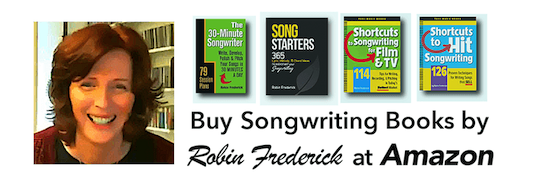
LYRICS
SIMPLE BUT COMPELLING: This lyric is conversational and natural sounding. There are no big words, no effort is being made to impress. Yet, it manages to create a sense of poetry and atmosphere.
The opening line of the song – “I’m gonna wash the dust off my soul” – is a great example of how to turn simple words into evocative lyric lines. Words like “wash,” “dust,” and “soul” come with a lot of associations: physical, emotional, and spiritual. By using words that come with extra baggage, a songwriter can say a lot with a little, adding layers of meaning and feeling to a line.
Seasons, colors, landscapes, family relationships, and familiar objects don’t exist in a vacuum; they come with associations for the listener. If you use a phrase like “cold winter’s day,” or “starry sky,” or “Mother’s hands,” or “crowded sidewalk” in a lyric line, it evokes a memory, experience, or feeling in your listener, enriching the line. The listener’s associations may not be identical to yours, but you’d be surprised at how much we all have in common.
Be sure the word associations you choose relate to your theme and the emotion you want to express. And make certain they work together in interesting ways to create a unified experience for the listener. Don’t use too many words that suggest wildly different experiences or emotions, or use too many different images too fast. Listeners need at least one or two lines to take in and process an emotion or idea. Take a look at the verses in this song to see how the images evolve over one to three lines.
You can read more about using images and associations here.
TITLE: One of Joshua Radin’s great strengths is his ability to turn a common phrase into a unique, evocative song. If you take a look at Radin’s titles you’ll notice that they are mostly short, everyday phrases: “Only You,” “Winter,” ‘With Me,” “Closer.” Most are one to three words, only a few are longer. Each title hints at an emotional situation or relationship, just the kind of thing that works well for a large number of film and TV scenes.
– Do It Now –
Take a look at Joshua Radin’s titles. You can find lists of them on iTunes, Spotify, or any lyric website. Create a few original titles of similar length and style. Keep your phrases focused on an emotional situation or relationship.
Melody
Radin’s melodies seem simple, but they’re always fresh and unpredictable. He takes pauses where we don’t expect and starts phrases in unusual places. This song is no exception. For all its folksy, down home vibe, the melody has a contemporary Singer-Songwriter edge.
Study a contemporary singer-songwriter melody
VERSE 2: Start with Verse 2 (“Gonna drive my car to the sea…”). It’s easier to count and sing along with than Verse 1 which has an extra measure of two beats. Play the second verse. Notice that the lyric phrases are often broken by a pause in the middle of a thought.
“Gonna drive my car (pause) to the sea”
“Swim out far (pause) ’cause I believe”
When Radin finishes the second line, he starts the next right away, with no pause:
“…’cause I believe / That the waves…”
He starts the last line of the verse (“I’m making a beautiful day”) in the place we expect, resolving the tension and giving that line added weight.
CHORUS MELODY: Listen to the transition line – “But let me hear you say” – and the chorus. Radin starts the transition line on Beat 3 which is unusual. But then he starts the chorus on Beat 1, just as it seems like it ought to. Then the line “I’m learning to fly” starts far later than we expect. He holds it back until the last moment, then drops right into the following line (“Hey, hey…”)
Radin moves back and forth between fulfilling our expectations and breaking them. One line starts where it seems like it ought to; the next one doesn’t. This keeps his melodies interesting. If there’s a balance of each – the unexpected vs. predictable – a melody can be both surprising yet easy to remember.
– Do It Now –
You’ll want this type of melody technique to occur to you spontaneously as you write and that takes practice. The best way to learn something like this is to embed it by learning to sing songs that use it.
If you’d like to play this song on guitar or keyboard you’ll find the chords with lyrics here in the key of C. If you want to play along with the recording, put your capo on the 4th fret or transpose your keyboard up four half steps (+4).
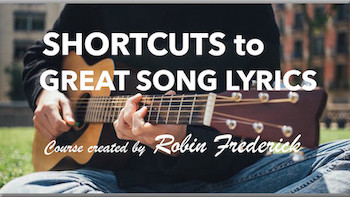
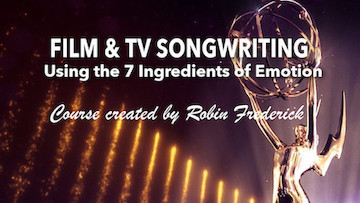
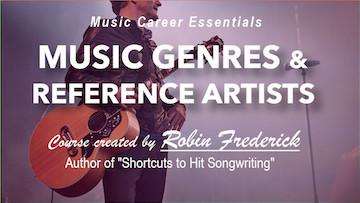
PRODUCTION
TEMPO & GROOVE: The track has an uplifting bounce to it, supporting the good feelings of the lyric theme. Notice that the tempo is not particularly fast. At 98 beats per minute, it has a comfortable momentum. Emphasizing the upbeats (the “and” between beats) in the guitar strum and percussion creates energy at this tempo, while allowing the song a relaxed, confident feel. A useful trick to keep in mind for this style.
There’s a folksy feel to the production thanks to the featured use of acoustic guitars and mandolin. Combine that with the sweet, upbeat groove and you get a feel-good atmosphere that underscores the simple, homespun theme of the song. Tempo, arrangement, and song are all working together to create a single effect on the listener. This is crucial for film and TV uses where a song is used to add atmosphere or emotion to a scene.
READ MORE HIT SONG GUIDES ON THIS SITE and learn from the hits!
